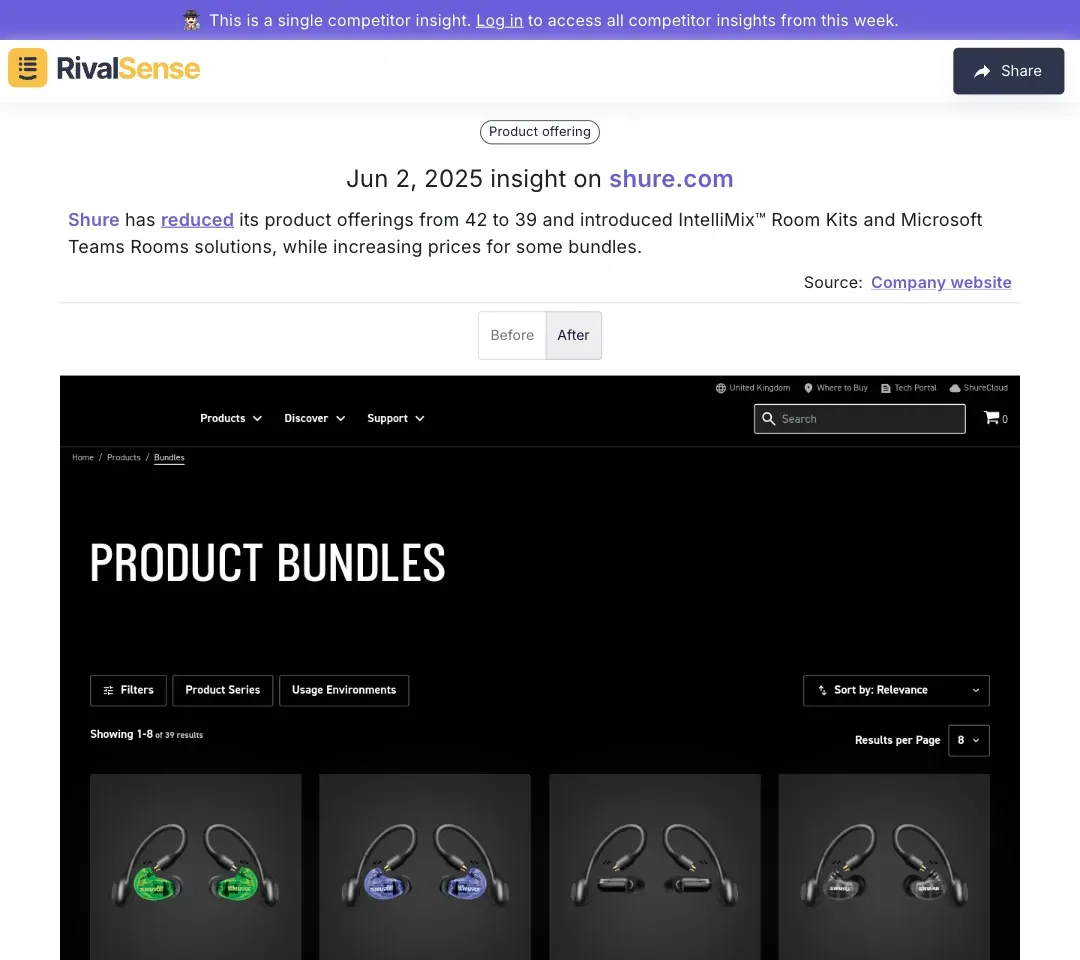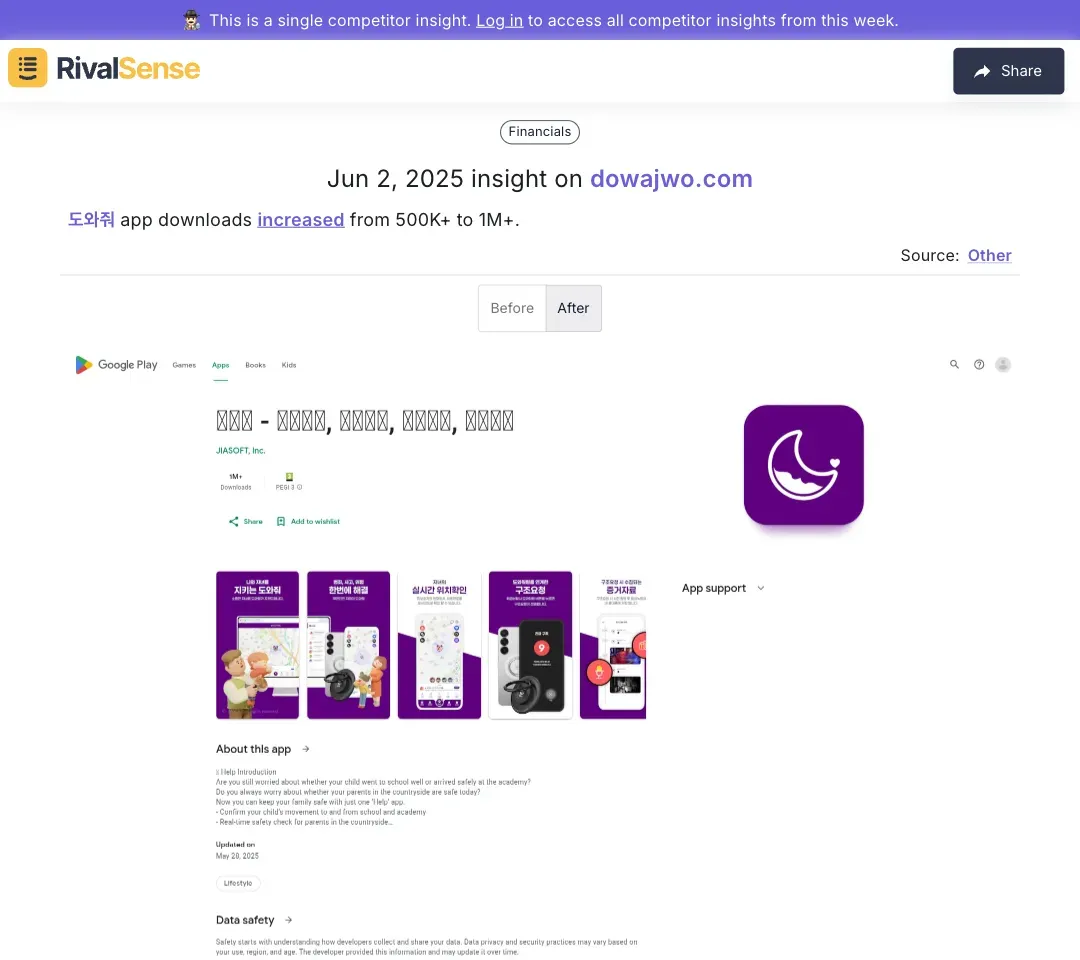Decoding Competitor Sales Tactics in B2B Dropshipping
B2B dropshipping presents unique challenges, from managing supplier relationships to ensuring seamless logistics for larger order volumes. Unlike B2C, longer sales cycles and higher stakes require deeper market intelligence. To excel, you must decode competitors' sales tactics—their successes and failures reveal what truly works in your market.
Competitor analysis goes beyond surveillance; it's about strategically leveraging insights to refine your approach. Start by identifying key competitors and dissecting their sales funnels: What channels dominate? How do they nurture leads? Tools like RivalSense automate this by tracking moves across websites, social media, and registries. Next, spot gaps in their tactics—perhaps weak email follow-ups or underused LinkedIn—which become your differentiation opportunities. Finally, integrate these findings: If competitors thrive with webinars, host your own with a unique angle.
✅ Practical Checklist:
- List top 3-5 competitors
- Map their sales channels
- Identify strategic gaps
- Adapt & innovate (don't copy!)
Identifying Your Key Competitors in B2B Dropshipping
Pinpointing rivals is step one in decoding their sales playbook. Use Google Search, SEMrush, or industry forums to discover businesses offering similar products. Focus on those targeting your ideal customer profile—this reveals true competitive threats.
Analyze their market positioning through unique selling propositions (USPs), pricing structures, and customer reviews. This exposes gaps in your strategy while highlighting market expectations. Understanding their audience is crucial: Study their content themes, social engagement patterns, and testimonial trends to infer targeting nuances.
📊 Competitor Matrix Template:
| Competitor | USP | Pricing Model | Top Engagement Channel |
|---|---|---|---|
| Competitor A | Fast shipping | Tiered subscriptions | |
| Competitor B | Bulk discounts | One-time fees | Industry webinars |
🔔 Pro Tip: Set Google Alerts for competitor mentions and monitor review sites like G2 for unfiltered feedback.
Monitoring Product & Pricing Shifts
Competitor product and pricing changes signal strategic pivots that impact your positioning. Tracking these shifts helps anticipate market trends and adjust your offerings proactively. For example, premiumization moves might indicate rising customer willingness to pay, while bundling often targets retention.
Consider how RivalSense detected these strategic shifts:
-
MGN Builders Merchants replaced framed rooflights with frameless versions. This product refinement suggests focus on aesthetics and modern design preferences:
Why it matters: Spotting product substitutions helps you preempt feature trends. -
Shure streamlined products from 42 to 39 while launching IntelliMix™ Room Kits and raising bundle prices:

Why it matters: Portfolio simplification often precedes premium repositioning—key for pricing strategy alignment.
🛠️ Action Steps:
- Benchmark prices quarterly
- Track feature additions/removals
- Reverse-engineer bundle logic
Decoding Competitor Sales Funnels
Understanding how competitors guide prospects to purchase reveals high-conversion tactics. Map their funnel stages—awareness, consideration, decision—to identify bottlenecks they've overcome. Notice lead magnets like ebooks or tools that capture contacts efficiently.
Key touchpoints to analyze:
- Awareness: SEO content, social ads
- Consideration: Case studies, free trials
- Decision: Limited-time offers, implementation guarantees
For instance, when 도와줘's app downloads surged from 500K+ to 1M+, it signaled effective funnel optimization:

Why it matters: Growth milestones validate funnel effectiveness—study the campaigns driving them.
🧩 Funnel Hack: Clone competitor webinar structures but add unique data—like your proprietary shipping metrics—to differentiate.
Leveraging Competitor Insights for Your Sales Strategy
Competitor intelligence becomes power when transformed into action. Adapt their proven tactics while layering in your unique strengths—like superior logistics or niche expertise. Innovation beats imitation: If rivals compete on price, counter with white-glove onboarding.
Measure impact through:
- ⬆️ Conversion rate lifts
- ⬇️ Customer acquisition cost reductions
- 🔄 Retention improvements
📌 Implementation Checklist:
- [ ] Pilot 1-2 competitor-tested tactics
- [ ] A/B test against current approaches
- [ ] Set 30-day KPI review cycles
Conclusion and Next Steps
Decoding competitor sales tactics provides continuous strategic advantage in B2B dropshipping. Remember: Analysis isn't periodic—it's an ongoing discipline that fuels innovation. Consistently track pricing shifts, funnel optimizations, and product changes to stay ahead.
Immediate actions:
- Build your competitor matrix (use template above)
- Schedule bi-weekly funnel audits
- Test one observed tactic next quarter
Struggling to track competitor moves manually? Try RivalSense free → https://rivalsense.co/
Get your first automated competitor report today—spot pricing changes, product launches, and growth signals before they impact your market position!
📚 Read more
👉 How De'Longhi's New Espresso Model Spurred Competitor Innovation
👉 Competitor Insight Templates: Strategic Response Frameworks
👉 5 Common Roofing Software Mistakes to Avoid for Better Customer Segmentation
👉 Data-Driven Insights on Competitor Partnerships & Client Strategies
